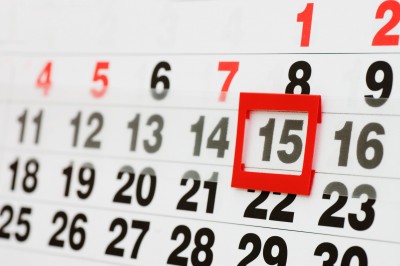I hope you find my writing and business tips and observations useful. My business and blog are dedicated to helping businesses communicate clearly and reach their potential.
Read, subscribe to my newsletter, enjoy!Tash
Getting your website found…
 There are many ways to promote your website, some will be more effective than others for your business and some are cheaper than others.
There are many ways to promote your website, some will be more effective than others for your business and some are cheaper than others.
You will probably get the best results by using a number of promotional means, especially as some will take time to have much impact (promotional articles for example are effective over time).
It is also worth remembering that it is not just in the early stages of your website that you need to promote it – it will be an ongoing process although the level and style of promotion is likely to be different at various times.
So here are 9 tips for getting your website found…
- put a listing into some online directories – but remember free isn’t always a good investment and that some directories are really only used by people adding listings. However, more incoming links helps with search engines, too (excluding links from link farms and other black listed sites)
- list your URL in your signature in emails you send and comments you add in any online forums
- if you have an enewsletter, get it included in a newsletter aggregator for more links to your site and potentially building your subscriber list
- include your URL prominently in your social media profiles and in some of your updates
- submit promotional articles to various sites and newsletters – they build credibility as well as incoming links
- put ads in newsletters sent to your target audience
- Having a blog in itself can build your website traffic, and you can enhance that further by adding your link to blog directories, and commenting on other blogs
- place ads on other sites (including through search engines themselves and social media platforms) – this often will cost money but sometimes you can barter or find free opportunities
- making use of offline promotions (think about ads in papers, radio ads, flyers, business cards, stationery and the like)
SEO needs to be understood as it encompasses all of the above to some extent and can send you a lot of traffic if harnessed well. It is also an ongoing process and will require many adjustments on your site over time to keep things fresh and allow for changes in search engine rules.
It is certainly possible to manage your own SEO or you can hire someone to help you with it. However, there are many people offering SEO services who are not ethical or qualified to help so be very careful who you trust with any SEO activities – and my personal opinion is to never use a SEO company who sends you an unsolicited email asking for your money.
This post is part of Word Constructions’ Setting up a website series
1. having a website helps more than you
2. what’s involved in setting up a website?
3. Learn about web hosting
4. Preparing your initial website content
5. Managing website design 101
6. Choosing a web designer
7. Basic web pages
8. Navigating your site
9. Making your website attractive
Making web content attractive
As you work on your website, there are some key activities to making the site more attractive (and therefore effective) for both humans and search engines.
Of course the key feature of a successful website is providing useful information – great navigation and design won’t do much if the content is lacking – but the following activities will make the content more accessible.
1. write for websites
Website content is not the same as content you would write in a letter or a printed brochure. Our eyes work slightly differently on a screen compared to a page and people have different expectations so web content needs to be short and start with the most important information.
Website content also has the advantage of hyperlinks so it is easier to refer to other information directly, including defining words and terms away from the main content.
2. utilise keywords and phrases (we’ll cover this further in this series, too)
A keyword or phrase is what people and search engines look for to judge if a web page is relevant; so keywords for this blog post could be web content, content, website, effective and SEO.
In general, the more you use a keyword, the more your page will get noticed in relevant searches so it is important to know your keywords and put them into your content. However, you need to balance adding keywords with readability of the content.
3. tell people about your site (check on Friday for the next post in our series for ideas)
The best website in the world won’t bring in business if no one knows about it so get the message out there! Whether it’s telling your friends or paying for a TV ad, or a multitude of options in between, you need an ongoing process of telling people your website exists.
4. keep the site fresh and current
Websites need to be updated and changed – you can’t just make it great and then leave it for years. While some content really doesn’t need regular updates (there’s only so many ways you can write “our phone number is 1234”!), frequently adding new content to your site gives people a reason to come back and makes it more attractive to search engines.
Some ways to keep your site fresh and current are to avoid unnecessary dates, removing old dates (e.g. for events in the past), add a blog or a feed (whether from a RSS feed or social media) and to add new portfolio items and testimonials.
5. link to related information
There are two main reasons to add links throughout your website content. Firstly, it can make things easier for your site visitors as they can find related information very easily. Being easy for your visitors gives them a good feeling about you and also means you can lead them along various steps to your action points.
Separately, search engines use links as part of their formulae in ranking your site against similar ones, so having more links to your web pages can help your search engine results – even links from your own site count.
This post is part of Word Constructions’ Setting up a website series
1. having a website helps more than you
2. what’s involved in setting up a website?
3. Learn about web hosting
4. Preparing your initial website content
5. Managing website design 101
6. Choosing a web designer
7. Basic web pages
8. Navigating your site
Managing website design 101
Unless you are a web designer, I strongly recommend you do not design your own website.
Yes, software is fairly easily available to make it possible, but don’t let that fool you into thinking anyone can design a decent (let alone good) website. Website design is more than choosing colours and putting the content on a page with a few links to a shopping cart or a blog. Even a good eye for design may not be enough as websites have specific requirements as well as coding issues.
And doing it yourself isn’t likely to be cheaper either. It may not cost you in terms of paying an invoice, but it will take a lot hours that you can’t invoice for and a low quality result can cost you in customers.
Enough of the negatives, and on to how to manage your design (or redesign)…
- know your brand and make the design suit it. Have a sedate and professional brand? Don’t get a young and funky web design as it will clash.
- think about what you want on the site in the longer term. You may be happy with five basic pages now with the expectation of adding a blog and forum in six months or so – include those expectations in the design brief so they are easy to add later without needing a new design.
- choose your designer carefully – there is a huge array of designers from those who overcharge and under deliver to those who give great results at a value price. We’ll look at this in my next ‘getting your business online’ post, or look at my tips on choosing suppliers
- while standing out by being different can be an effective marketing strategy, remember that some differences are a hindrance. For example, putting a menu in a strange place, not underlining hyperlinks and cute or clever alternatives to ‘submit’ and ‘buy’ buttons may confuse people and push them away form your site – colour backgrounds may look nice, too, but if people find the text hard to read the nice colour is hurting your site
- put humans first and search engines second – search engine optimisation (SEO) is an important part of attracting people to your site but no one will stay if you haven’t also considered a human’s needs on a website.
- keep important information visible and easy to find. For example, if you want people to call you, don’t just have your phone number in the footer – make it prominent high on the page
- plan the navigation carefully – this can be the hardest and most time consuming step for you but it is important enough to warrant being done thoroughly. Discuss your plan with your designer, content writer and anyone else involved in the project as their expertise may spot weaknesses
- make sure your design complements your other business materials. If I was given your business card or flyer and am interested enough to follow through by typing in a URL, I expect to see something similar when I reach your site. If your site is heading in a new direction, update the supporting materials ASAP
- increasingly, people are accessing websites via mobile devices. Sites can be designed to suit mobile devices now so incorporate that into any new site – if you’re going online, you may as well be online for everyone!
- be wary of using templates, especially free templates. If the finished product looks like some text placed into a template people have seen 50 times before, your website is not communicating much of benefit (it says cheap, unprofessional, lazy, boring and uninspiring – is that what you want your site to say about your business?) On the other hand, a template adapted to your needs can be effective and cheaper than a custom design – it’s a matter of balance. Make sure you get a template that allows you to change background and font colours, images, header height and the like and, most importantly, lets you decide on the number of menu items showing.
- communicate with your designer frequently and honestly. Insist on seeing drafts and giving feedback on what you do and don’t like, and ask questions about why something is done in certain ways – if the designer has a good reason you may be best to leave it alone, but things based on designer preferences can change to your customers’ tastes.
- test the site before you approve it – search for relevant information and be sure someone could find it, look at it on different browsers and screens, click on links to be sure they work, and make sure any tools work properly (shopping carts, search boxes, subscription forms, etc)
What other tips do you have for managing the web design of a new site?
This post is part of Word Constructions’ Setting up a website series
1. having a website helps more than you
2. what’s involved in setting up a website?
3. Learn about web hosting
4. Preparing your initial website content
Preparing your initial website content
Filling an entire website with content can be a bit daunting, especially when you are also trying to get the design and navigation settled. So the third part of our series on getting your business online is about some initial website content.
Rule number one – don’t put up a message like “under construction”.
Search engines don’t like it – and nor do humans for that matter! To me, it looks lazy as it is not much harder to put a brief message on a temporary homepage than to write those two boring words there.
Obeying rule number one, many people therefore don’t have anything showing on their site during the development phase. This seems like a waste to me – the sooner your site is up, the sooner you can send people there (i.e. you don’t have to delay all marketing while waiting) and let search engines discover it.
So my suggestion is to have an interim homepage that can go live very quickly, giving you and your designer a bit of breathing space.
Here’s what to include on that interim page…
- your business name! obvious but very important!
- your logo if you have one – don’t use a makeshift logo though
- some basic contact details. Top or bottom of the page or in text doesn’t matter as long as someone can find out how to get in touch with you. A message like “Our full website will be here soon but in the meantime please email us on **@****in.com or call 1234 3456″ covers it nicely
- your tagline, if you have one
- your USP (and you need one if you haven’t already got one)
- some basic information about your business and/or website so people can determine if you offer what they were after in the first place. Sure many won’t come back but some will if they think you will meet their need. A paragraph or two or a bullet list is all you need
- if you have them and are using them for your business, add links (preferably via graphics than text) to social media profiles so you connect all your online presences
So with a domain name, a host and some initial content, you can have a simple web presence quite quickly. Does it feel a it easier to achieve now?
Although an interim page like this is not an ideal website, it is better than nothing so just taking this step will get you online.
If you still doubt the value or worth of getting online, get an interim site up (grab some monthly hosting and you can do it for under $50, too) and monitor your calls and sales for a couple of months. Let me know if the website makes a significant difference to your leads – or even if it gives you one more!
This post is part of Word Constructions’ Setting up a website series
1. having a website helps more than you
2. what’s involved in setting up a website?
3. Learn about web hosting
When a date doesn’t date…
In the last week we have seen a lot about world and local financial markets – they dropped drastically but has already picked up some of that again. Have you tried researching information about this situation, either in general or for something specific?
News without a date
I was looking at various superannuation sites yesterday to see what they were telling members about their investments and was amazed that not all listed a date for the news item they had published.
One in particular started their article with “Last week was a tumultuous one for world share markets” and finished with a footnote “*SR50 Balanced fund SuperRatings Crediting Rate Survey, June 2011”.
So was it about things that happened last week (i.e. early August 2011) or some other week since June 2011?
I’m fairly confident the article went live in the last 48 hours so presumably it is about recent developments. But what if I hadn’t looked at their site until next week – would the data still be relevant or useful?
Yes, putting dates on websites can date them fast (the ‘last updated’ reference on many pages is the prime example of that) but current news items are the exception.
I have often read blog posts and wondered when it was written; “new version of ABC will be released next month” and “our web visitors doubled in the past 12 months” carry more weight when I understand ‘next month’ and ‘past 12 months’. A small note after the post is fine (WordPress does it by default and that works for me!)
People need to have a context, a reference point for the information. Especially for things like financial markets which change so rapidly at times.
And just to be clear, this is being written on 10 August 2011!
What, if any, pages on your site do you add a date to? If not all pages are the same, why do you add dates to some but not others?
6 steps to getting a website online?
Welcome to the first in a series of posts about getting your business online. Even if you are not yet sure you will start a website, the aim is to give you the information to make an informed decision for your business.
 So let’s start with the basics of what you need to do to get a website up – and let’s make it a decent website that your business doesn’t need to be ashamed of! (We could get a website up in about 10 minutes but it may do more harm than good!)
So let’s start with the basics of what you need to do to get a website up – and let’s make it a decent website that your business doesn’t need to be ashamed of! (We could get a website up in about 10 minutes but it may do more harm than good!)
- get a domain name – I suggest doing this even if you don’t add a website for some time. Keep the name for your use and you can use it as an email address even if there is no functioning website yet
- get a web host – this means you are paying someone for some space on the internet. There are many hosting packages available, covering various features and a huge price range – it is feasible to get hosting for under $100 a year so look around. We’ll cover hosting options later in this series, but I strongly recommend my host, Digital Pacific.
- get some information online – you can start with a very simple one-page site that explains who you are and how you cane contacted. You may be happy with that in the medium term, too, but it certainly gets you online while a full site is being developed.
- get your site designed – yes that means someone makes it all look nice but it may also mean getting the right programs in place to suit your business needs.
- add content to your website – content is critical if you want to get the right message to the right people, and if you want to do well with building your website traffic. Look through my blog for numerous examples of websites let down by poor content – I suggest you plan your content (we’ll cover this during the week, too, but make sure your key pages have great content from the start)
- let people know about your website – this is a big ‘task’ and will be ongoing for the life of your site, but there are some simple starting points to action straight away
Does a website seem a little less intimidating when there are only 6 steps? remember that you can (and probably should for many of the steps) get help with the actual implementation of each step.
As a website without a host is pretty hard to manage, the next in this series will be on hosting…
Having a website helps more than you
A New Zealand study has just shown that businesses with a website are helping their economy – or more to the point, businesses without a website are missing an opportunity to help themselves and their local economy.
So do you have a website?
I’ve written before about the value of a website, and I think it’s importance has only increased with the growth of social media and mobile access and apps, but I hadn’t thought of it as a major factor for a national economy. Results showed businesses with an online presence had significantly more sales and profits – who’s going to argue with increased profits!
As great as it is to grow your business with a website, I found it staggering that 70% of those without a website have no intention of getting one. I understand that not everyone is comfortable with technology (but you can get people to set it up and mange it for you) and time is a big factor for small business (hey, I have four kids and a business!) but a basic online presence is just so important.
Over the next week or so, I will do some posts about how to get your business online to help business owners who are feeling a bit overwhelmed with it all – and to help the Australian economy!
If you have any questions about getting online, now is a great time to ask!



Recent Comments